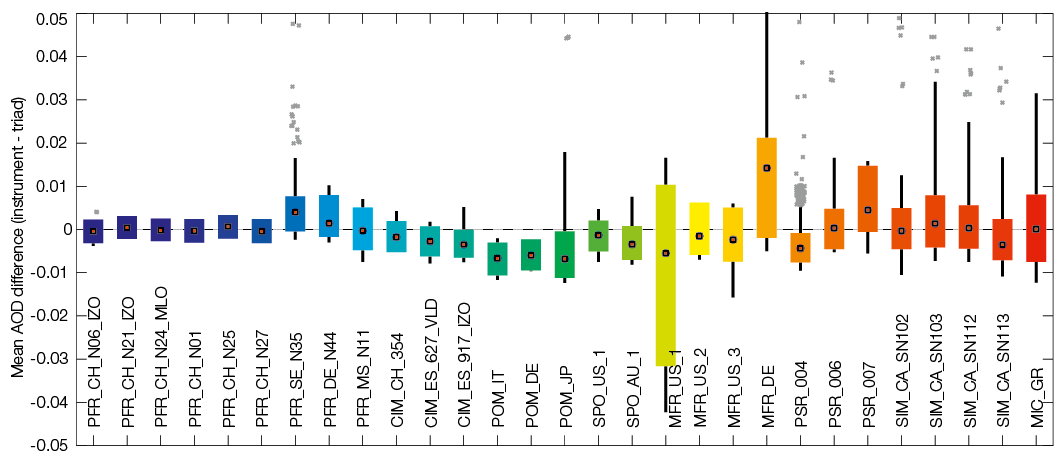Introduction
Filter Radiometer Comparisons (FRCs) are organised every five years at PMOD/WRC. These AOD comparisons are conducted under various atmospheric conditions which allow different radiometers, calibrations and AOD software to be compared. The main factors that are responsible for possible deviations in global or national AOD networks can thus assessed.
Filter Radiometer Comparisons
PMOD/WRC began the first FRC in 2000 with the support of the WMO. The objective of the campaign was to compare different instruments belonging to different global or national networks in order to quantify the main factors that are responsible for possible deviations. The aim of the whole activity was to initiate action towards homogenisation of the AOD measurements on a global scale. The comparison protocol was formulated according to the WMO recommendations. Measurements of each instrument were compared to the Precision Filter Radiometer (PFR) triad.

